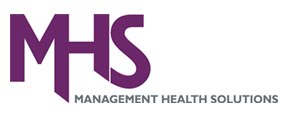The nature of a healthcare organization is to help others
improve their health, but it would save money and reduce turnover if these
organizations also focused on their own employees by promoting healthy living
and wellness for them.
"There's a huge cost to employers when there's turnover
of any kind," said Susan Moriconi, vice president of human resources at
Omnicell, a medication and supply automation company based in the San Francisco
Bay area. "But when an organization is invested in and committed to the
health of their employees ... those people will want to remain with their
employer and make a career. Which means organizations can retain institutional
memory and scale of knowledge that people gain while they're working."
Additionally, healthy employees are both more productive and genuinely happier
people.
Moriconi shared her list of five approaches healthcare
organizations can take to help reduce turnover costs by promoting healthy
living for their own employees.
1. Develop a wellness program
"Programs exist where companies can offer health
benefit programs with scaled healthcare premiums if an employee has undergone
biometric testing or other screenings made available to them," said
Moriconi. Other programs offer financial incentives, like a reward of $75 for
having a health screening provided by the company. Offering access to an
on-site gym, exercise classes with fitness trainers at no charge and
educational courses on healthy lifestyles is also beneficial to employees and
employers alike.
2. Support from supervisors
Support from top leadership is incredibly important and
influential. When an approach to wellness is initiated and championed by a CEO,
employees see it as encouraging.
3. Offer flexible schedules
"Managers should help employees have flexible schedules
which would allow them to take advantage of the programs offered,"
Moriconi said. It's one thing for a company to simply offer health and wellness
opportunities, but it's much more beneficial if they take a proactive approach
at making sure their employees have the time to take advantage of them.
4. Create work-out rooms to work in
Many companies these days are creating rooms with treadmills
where people can hold a meeting or have a conference while walking.
5. Employee engagement
"Allow employees to pick something new they would like
to do – a new healthy food or activity they've never tried – and reward them for
it," suggested Moriconi. "Offer stress-busting challenges and have
employees participate in them a couple times a week over the course of a few
months." They can then earn points toward programs such as scaled
premiums.
Source: healthcarefinancenews
